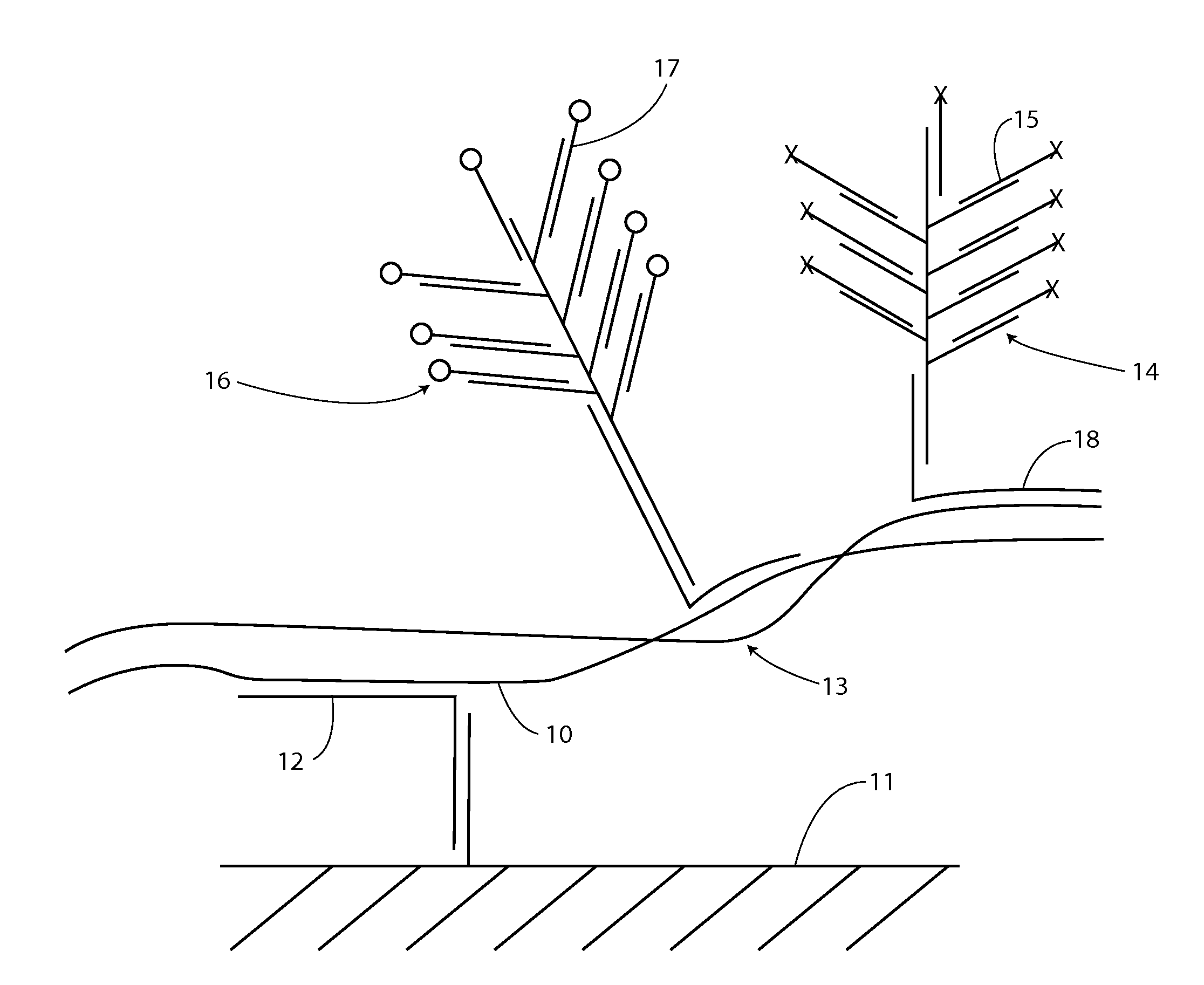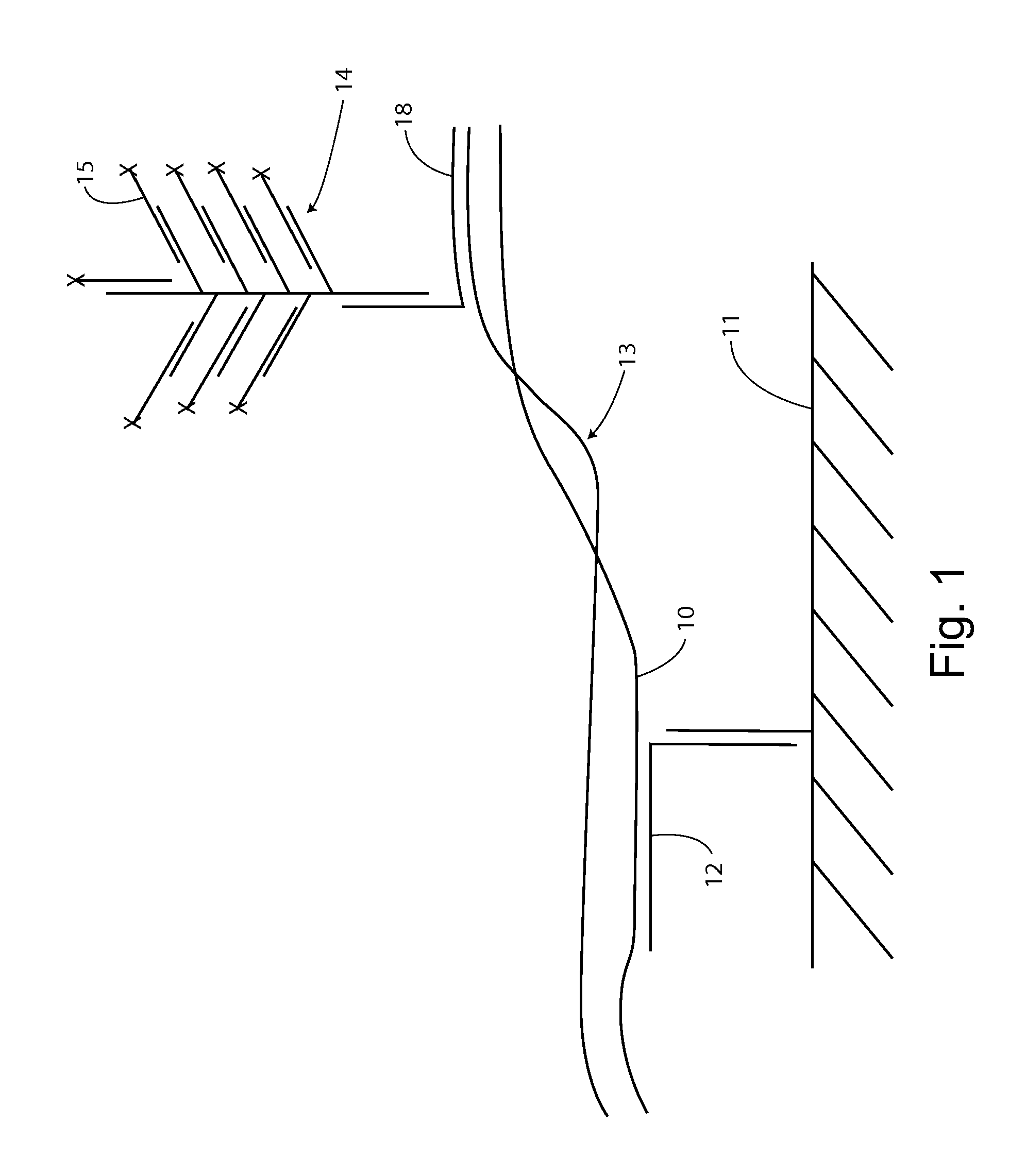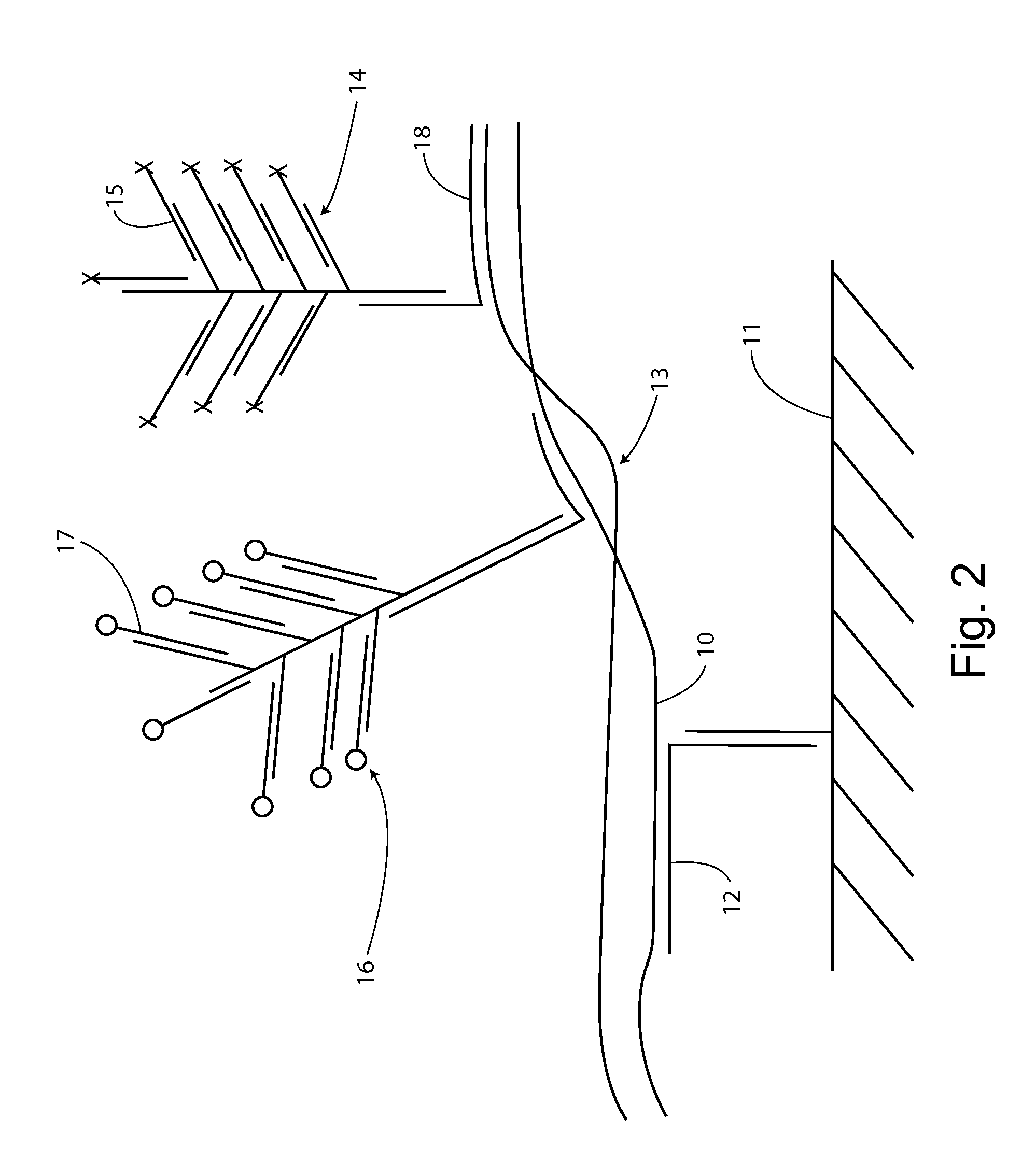Detection of Nucleic Acids
a nucleic acid and detection method technology, applied in the field of nucleic acid detection, can solve the problems of sample detection, old art methods are typically not well adapted to nucleic acid quantitation, and methods that require denaturation typically, so as to enhance the sensitivity and specificity of analyses, improve the ability of the probe system to distinguish, and high specificity for dna.
- Summary
- Abstract
- Description
- Claims
- Application Information
AI Technical Summary
Benefits of technology
Problems solved by technology
Method used
Image
Examples
example 1
Identifying Double Stranded Nucleic Acids on a Solid Support
[0158]The presence of a double stranded nucleic acid in solution can be confirmed by capturing the nucleic acid on a solid support, e.g., with a capture extender sequence that binds the antisense strand and a label extender that binds sense strand at different location.
[0159]For example, as shown in FIG. 1, first strand 10 can be captured on substrate 11 by specific hybridization with capture extender 12. The first strand remains associated with the second strand through at least a segment of base pairing in a double stranded segment 13.
[0160]A label system 14 is introduced with a sequence specifically complementing a second strand sequence through label extender 18. If the second strand is associated with the captured first strand, then a reporter signal, e.g., from label probes 15 will be detected at the solid support location. If the second strand is single stranded and not associated with the first strand, there sill be...
example 2
Identifying Particular Double Stranded Nucleic Acids In-Situ
[0163]Here we describe compositions and methods for, e.g., identifying whether a hybridization signal is for a single, or double stranded nucleic acid, RNA or DNA, e.g., in a fixed tissue sample.
[0164]In-situ hybridization, e.g., probing for nucleic acids in a fixed tissue sample, suffers from the problem that certain probes can hybridize to either a DNA coding sense strand or its transcribed mRNA. In other situations, such as in the field of double stranded RNA viruses, one would like to know if an RNA in a tissue sample is double stranded.
[0165]One advantage of in-situ hybridization can be that nucleic acids in fixed samples tend to remain localized. Therefore, e.g., the tissue matrix can act as a substrate, retaining nucleic acids at a particular location. Further, in an assay for double stranded nucleic acids, the strands do not have to remain base-pair bonded in order to test for double stranded status. That is, as com...
example 3
Simultaneous Detection of DNA and RNA in an In-Situ Sample
[0168]Oligonucleotide probe can hybridize to both RNA and DNA in-situ hybridization assay. Hence the DNA signals can be mistaken for an RNA signal, and vice versa. Genomic DNA signal is expressed in nucleus while RNA is expressed mostly in the cytoplasm. However, RNA can be also be expressed in the nucleus (e.g., inducible IL-8, non-coding RNA, transient mRNAs). Of particular concern are possibly mixed signals from coding DNA and the associated mRNA transcript.
[0169]We have designed strategies that used alone, or optionally in combination, can ensure specific detection of RNA and DNA, without confusion. Specific probe sets and procedures can distinguish DNA and RNA in-situ, even where they share common sequences. For example, probe sets can be prepared to take advantage of differences in target sequences, target size, strandedness, signal intensity, and / or target access to distinguish DNA from RNA in-situ.
[0170]We have found,...
PUM
| Property | Measurement | Unit |
|---|---|---|
| Fraction | aaaaa | aaaaa |
| Time | aaaaa | aaaaa |
| Color | aaaaa | aaaaa |
Abstract
Description
Claims
Application Information
 Login to View More
Login to View More - R&D
- Intellectual Property
- Life Sciences
- Materials
- Tech Scout
- Unparalleled Data Quality
- Higher Quality Content
- 60% Fewer Hallucinations
Browse by: Latest US Patents, China's latest patents, Technical Efficacy Thesaurus, Application Domain, Technology Topic, Popular Technical Reports.
© 2025 PatSnap. All rights reserved.Legal|Privacy policy|Modern Slavery Act Transparency Statement|Sitemap|About US| Contact US: help@patsnap.com



